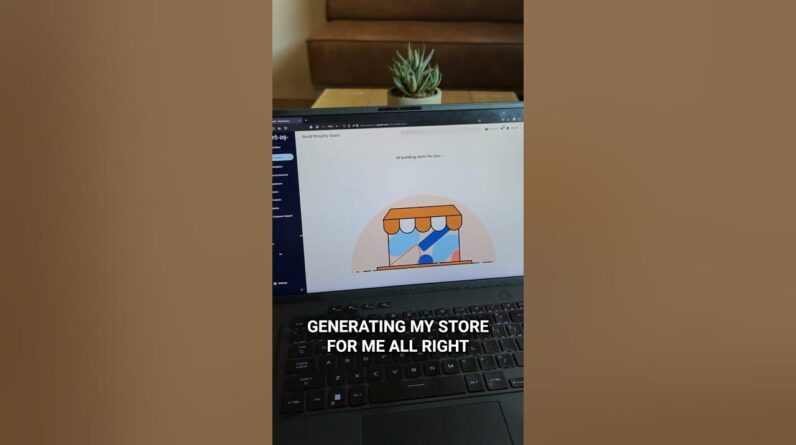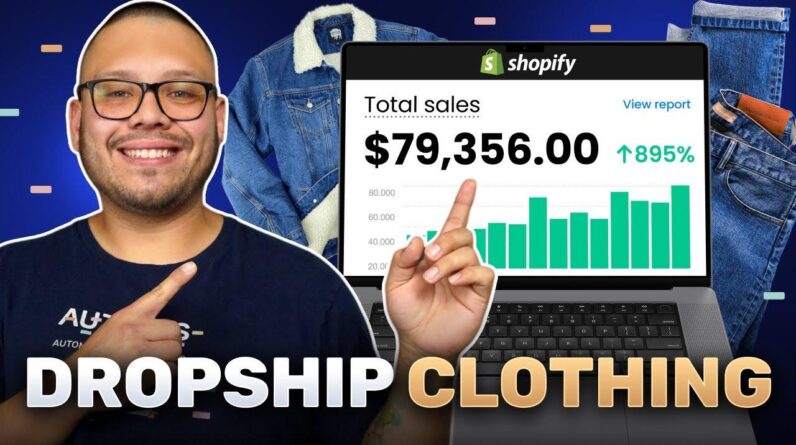In the competitive world of e-commerce, where every detail can make or break a sale, understanding the ins and outs of drop shipping is essential for success. One prevalent concern among aspiring online retailers is how to manage the often-intrusive visibility of suppliers and their packaging. Imagine a customer receiving a beautifully wrapped order only to find a conspicuous box emblazoned with the name of your supplier. This can lead to confusion, disappointment, and, worse still, lost profits as customers bypass your shop for a direct buy. Enter the concept of “blind dropshipping,” a strategy designed to maintain anonymity between you and your suppliers, ensuring a seamless customer experience. In this blog post, we’ll delve into the insights shared in a recent YouTube video titled “Blind Dropshipping – How To Hide Your Supplier and Prices!”, exploring the nuances of this innovative approach. We’ll discuss how to effectively obscure supplier details and create a more personalized shopping experience, enabling you to focus on what truly matters: growing your business and delighting your customers. So, if you’re ready to learn how to shield your supply chain and enhance your dropshipping game, read on!
Table of Contents
Understanding Blind Dropshipping and Its Benefits
“`html
Blind dropshipping is a strategic approach that allows e-commerce entrepreneurs to seamlessly fulfill customer orders without revealing their supplier's identity or pricing structure. In this model, when a customer makes a purchase, the seller contacts the supplier to fulfill the order directly, ensuring that the product is shipped straight to the customer without any visible branding or packaging from the supplier. This not only protects the seller's margins but also maintains a professional image. By utilizing this method, sellers can focus on marketing and customer experience rather than inventory management and logistics.
The benefits of blind dropshipping are significant. First, it enhances customer trust by presenting a consistent brand image; customers receive products in unbranded packaging that aligns with the seller's branding. Additionally, removing supplier branding prevents customers from easily identifying where products are sourced, thereby reducing the risk of them bypassing the seller in the future. Further advantages include:
- Higher profit margins: Without revealing supplier costs, sellers can maintain competitive pricing.
- No inventory management: Sellers never have to handle stock, reducing overhead costs.
- Flexibility in sourcing: Sellers can switch suppliers without impacting customer experience.
“`
Mastering Supplier Anonymity to Protect Your Brand
“`html
To effectively master supplier anonymity in blind dropshipping, the first step is to ensure that the packaging used for shipping does not reveal any identifiable details about your supplier. This means opting for plain, unmarked boxes or materials that do not bear your supplier's branding. By using generic packaging, you can prevent your customers from easily tracing the product back to the supplier, thus maintaining the integrity of your own brand. Additional strategies include:
- Working with wholesalers who offer white-label services, allowing you to brand the products as your own.
- Requesting your supplier to use neutral packing slips that do not display any supplier information or prices.
- Establishing clear communication with your suppliers about your anonymity requirements prior to placing orders.
Another crucial element to consider is the bill of lading or invoice that is often included in the shipment. To protect your brand, ensure that this document is either omitted or altered to exclude supplier details and pricing. This not only shields your sourcing methods from being discovered, but it also helps maintain the perceived value of your offerings. Utilizing services that offer customized invoices can be beneficial in achieving this goal. Key methods to consider include:
| Method | Description |
|---|---|
| Custom Invoice Generation | Use software to create invoices that show your store’s branding and hide supplier details. |
| Direct Supplier Communication | Ask suppliers to send items without including invoices or packaging with their logos. |
| Third-Party Fulfillment Services | Consider partnering with services that specialize in blind dropshipping. |
“`
Strategic Packaging Solutions for a Seamless Customer Experience
“`html
In the realm of blind dropshipping, packaging plays a critical role in shaping the customer experience. The primary objective is to ensure that products arrive in unbranded or generic packaging that aligns with your store's identity. By opting for plain boxes or envelopes, you can effectively eliminate any confusion your customers might face regarding the origin of the product. This approach not only protects the anonymity of your supplier but also fortifies your brand’s image, allowing customers to associate their purchase solely with your store. Key elements to consider include:
- Generic Packaging: Utilize unbranded boxes that do not reveal supplier information.
- No Invoices: Ensure no receipts or invoices are included that disclose costs or supplier identities.
- Consistent Branding: If possible, include promotional materials that reinforce your brand without revealing the source.
Additionally, managing invoices is crucial to maintaining a seamless shopping experience. Many suppliers provide an option to send a blank invoice or a customized packing slip that reflects your brand instead. By taking advantage of this feature, you can further enhance customer trust and satisfaction. Here are some effective practices to consider:
| Practice | Description |
|---|---|
| Use Packing Slips | Create custom packing slips that only show your branding. |
| Request Supplier Changes | Communicate with suppliers to ensure anonymity in shipments. |
| Customer Communication | Set clear expectations on shipping times and packaging details. |
“`
Ensuring Invoice Privacy: Best Practices and Tips
html
Maintaining customer trust while ensuring invoice privacy is crucial in the blind dropshipping model. One of the primary aspects to focus on is the packaging used for shipments. Make sure that your suppliers use unbranded packaging that does not reveal their identity or origin. This ensures that your customers only see your brand name, eliminating any chance of them discovering where you sourced the products. Additionally, communicate clearly with your suppliers about your packaging preferences. A simple request for generic boxes without any branding can go a long way in maintaining that anonymity.
Another pivotal element is handling invoices and documentation that accompany the products. To protect your business model and pricing structure, ask your suppliers to include a blank invoice or a customized one that does not display their details or the wholesale prices you paid. This can often be accomplished by setting up a special dropshipping agreement with them. Consider the following best practices:
- Request customized invoices directly from suppliers.
- Use a third-party service that specializes in blind dropshipping.
- Regularly review packaging and documentation processes to ensure compliance.
By implementing these strategies, you create a seamless shopping experience for your customers while safeguarding your supplier relationships.
Q&A
Q&A: Blind Dropshipping – How To Hide Your Supplier and Prices!
Q1: What is blind dropshipping?
A: Blind dropshipping is a unique fulfillment business model where you source products directly from a supplier and have them shipped straight to your customer, all without handling any inventory yourself. The main goal is to keep the supplier’s identity and prices hidden from the customer, ensuring a smooth shopping experience.
Q2: Why is it important to hide the supplier’s information?
A: Hiding the supplier’s information is crucial because it prevents customers from discovering where you source your products. This reduces the risk that they might bypass you and purchase directly from the supplier, potentially undermining your business.
Q3: What are the common challenges faced in blind dropshipping?
A: One of the biggest challenges in blind dropshipping is managing how products are packaged during delivery. For instance, if a product arrives in packaging from an identifiable retailer like Amazon or Wayfair, it could surprise or upset the customer. Additionally, invoices that come with the product may reveal supplier information and prices, which should be kept confidential.
Q4: How can I ensure that the packaging is discreet?
A: To ensure discreet packaging, you should work with suppliers who offer anonymous shipping options. This means they will ship products in plain packaging without any logos or branding that identifies them. Always communicate your requirements with your supplier to confirm they can accommodate this request.
Q5: What steps can I take to manage invoices or bills of lading?
A: It’s essential to ensure that any invoices or bills of lading that accompany packaged products do not show your supplier’s details or prices. You can often request that suppliers do not include such documents in the shipment or ask them to provide blank invoices. Many suppliers are accustomed to dropshipping and can cater to these needs.
Q6: Is blind dropshipping complicated for beginners?
A: Blind dropshipping can be straightforward for beginners as long as you take the right steps. Focus on finding reliable suppliers, understanding the process of placing orders, and clearly communicating your preferences regarding packaging and invoicing. With practice and the right partnerships, you can streamline your operations and maximize profits.
Q7: What should I focus on if I adopt a blind dropshipping model?
A: If you choose blind dropshipping, prioritize product research and marketing to attract customers. Since you won't be handling inventory or shipping, you can dedicate more time to building your brand and enhancing customer service. Strong marketing, quality products, and effective customer communication are key components for success in this model.
Q8: Where can I learn more about blind dropshipping and sourcing products?
A: To learn more about blind dropshipping, resources such as industry blogs, YouTube tutorials (like the one discussed), and dropshipping courses can provide valuable insights. Engaging with online communities and forums focused on dropshipping can also help you connect with experienced sellers and share best practices.
Final Thoughts
we've delved into the essential components of blind dropshipping—an innovative approach to maintaining customer satisfaction and protecting your business's bottom line. As discussed in the video, the significance of anonymity in your operations cannot be overstated; it’s not just about the products but about preserving the integrity of your brand. By ensuring that packaging and invoices from suppliers are kept discreet, you sidestep potential pitfalls that could lead to customer disappointment or confusion.
From exploring strategies to source products without revealing supplier information to understanding the logistics necessary for a seamless experience, it's evident that blind dropshipping opens up a world of opportunities for savvy entrepreneurs. As you venture into this fulfilling business model, remember that the focus should always be on product research and delivering quality experiences to your customers.
We hope this blog post has illuminated the intricacies of blind dropshipping and empowered you with the knowledge you need to elevate your e-commerce game. For a deeper dive into the specifics and practical tips, don’t forget to check out the full video. Happy dropshipping, and may your sales soar without revealing your secrets!







